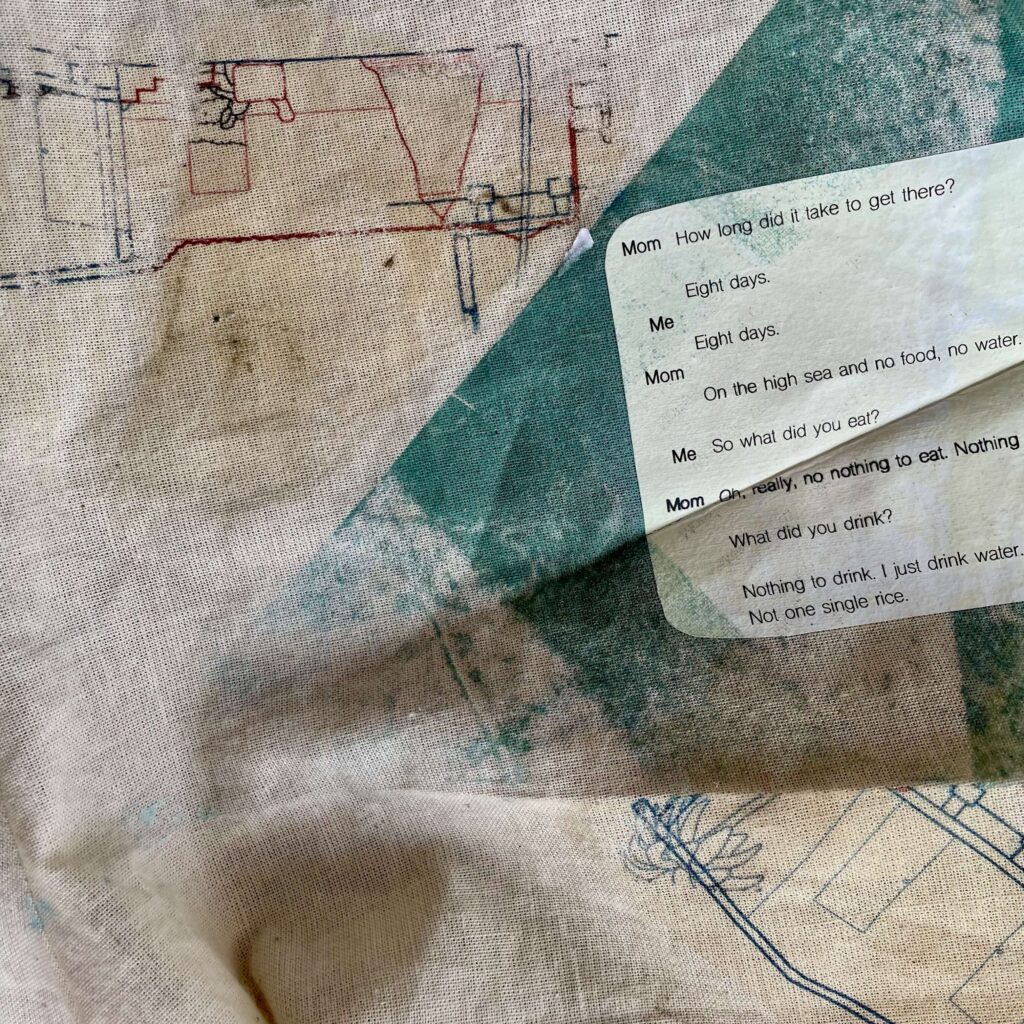
This thesis explored my mother’s story of displacement in an attempt to show that reconstructing architectural representation can help showcase underrepresented stories. While hearing my mother’s story, I realized that she had an interesting relationship with architecture and time. She was forcefully moved from place to place without ever knowing what was going to happen next, and she would always make changes to her space in order to adapt to her needs. The current way to represent architecture cannot capture this complex relationship between space and time. Architects need to develop new ways of representing the spaces that refugees live in and that highlight these temporal aspects. I created a garment that incorporates elements of my mother’s story as a refugee as she verbally reported them to me, as well as visual representations of multiple places where she lived as a refugee. Using the fabric allowed me to experiment with this notion of time. When the garment folds, rotates or transitions, it recontextualizes the drawings on the garment. The garment transitions to different articles of clothing based on my mother’s transition to different locations. It helps show that, for a lot of people who are displaced, architecture is not anchored by site. Most people who are displaced do not know the context of the location they are currently in, and that is what happened to my mom. She didn’t go through the locations, rather the locations went through her. This garment rethinks architectural representation, as self is the site. Hopefully, this creation will open new doors on how to think about representation in architecture.